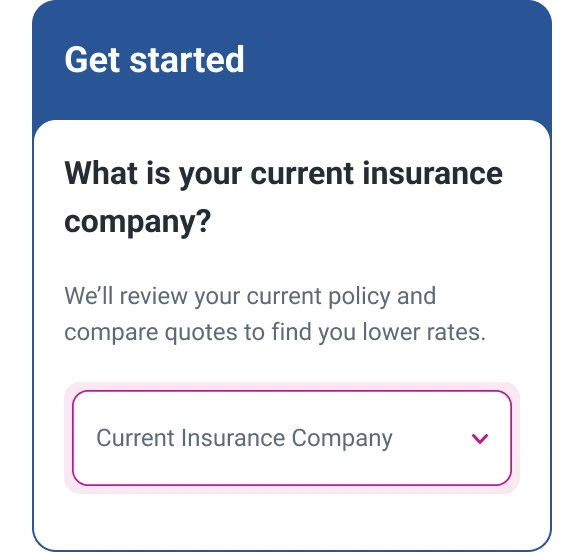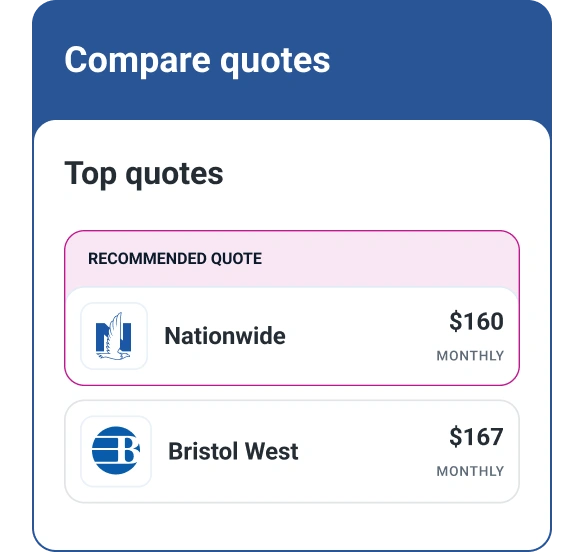What Is No-Deductible Car Insurance?
Quick Answer
No-deductible car insurance policies only require consumers to pay premiums, and nothing out of pocket at the time of repair. But these types of policies tend to be pricier and harder to get due to increased repair costs for the insurer.

Paying a monthly car insurance premium and still having to pay out of pocket up to your deductible after an accident may feel like a double whammy. If you'd rather not have to worry about a deductible next time you need to access coverage, no-deductible car insurance may seem attractive.
No-deductible car insurance is exactly what it sounds like: You pay your premiums and, when you have an accident, you don't pay a deductible for repairs or other costs.
But can these policies really help you save money? In truth, the potential for savings is questionable. These policies are rare—and more expensive—because they present a greater risk for the insurance company. Here's what you need to know.
How Does No-Deductible Car Insurance Work?
No-deductible car insurance, also known as zero-deductible insurance, is a type of policy where the policyholder pays nothing out of pocket following an accident. This is a contrast to how auto insurance traditionally works, wherein a policyholder has to pay for repairs up to their deductible amounts (commonly $500 to $2,000) before their coverage kicks in.
With no-deductible coverage, the entire cost of the policy is weighted in the premiums. Because the insurer carries all the risk associated with a potential future accident, no-deductible policies tend to cost more than traditional car insurance.
This heightened risk to the insurer also means few companies are willing to offer this kind of policy. Those that do may require you to have a very good driving record that's free of accidents, and even excellent credit (insurers may consider credit-based insurance scores when approving applicants) in order to be approved for a policy.
Pros and Cons of No-Deductible Insurance
Consider the pros and cons of no-deductible insurance before investing in one of these policies:
Pros
- No out-of-pocket costs after an accident
- The insurer shoulders more of the risk
Cons
- Higher premiums
- Less frequently offered
The biggest reason to opt for no-deductible car insurance is if you could not afford your deductible when your car is damaged suddenly. But it's important to understand you could pay more over time due to the higher premiums.
Consider the hypothetical example in the chart below of what you might pay for a yearly maximum and minimum on a typical insurance policy versus a no-deductible insurance policy:
| Typical Policy | No-Deductible Policy | |
|---|---|---|
| Monthly premium | $100 | $150 |
| Deductible | $500 | $0 |
| Yearly maximum (with one accident) | $1,700 | $1,800 |
| Yearly minimum (without an accident) | $1,200 | $1,800 |
Even though there is no deductible due at the time of an accident, the higher premium cost requires the no-deductible policy holder to pay more over time. Over time, this added cost could easily end up wiping the savings you'd see from not having to pay a deductible.
Car Insurance Costs
Understanding the costs related to car insurance can help you decide what to pay for and what to save on when pricing a new policy. Make sure you're familiar with these costs:
- Premium: Your premium is the amount you pay each month to secure your insurance policy.
- Deductible: Your deductible is the amount you'll pay for repairs on your vehicle before your insurance company pays. It resets with each claim.
- Out-of-pocket expenses: While not part of your insurance policy, you may owe some out-of-pocket expenses when you file a car insurance claim, including:
- Costs the repair shop charges you over the insurance repair estimate, such as a higher labor rate than quoted.
- The difference in the cost of original equipment manufacturer (OEM) parts vs. aftermarket parts if you choose to use OEM parts and your insurance doesn't cover them.
- Incidentals, such as coverage for a rental car if your insurance policy doesn't have rental reimbursement coverage.
How Can You Lower Your Car Insurance Costs?
There are several ways to decrease your car insurance cost, including:
- Reduce your coverage. If you have an older vehicle and want to save on car insurance costs, you could reduce your coverage by dropping collision or comprehensive coverage. Collision covers damage to your vehicle in an accident. Comprehensive covers damage to your car from non-accident events, such as theft or repairs after a tree falls on your vehicle. If your vehicle's value is below a certain threshold, it's possible that it may not be worth it to pay a monthly fee for these kinds of coverage anymore.
- Raise your deductible. You may also be able to reduce your car insurance costs by raising your deductible. This way you pay less for your monthly premiums but will pay more out of pocket if you get in an accident.
- Compare your rates. You may simply be paying more than you have to with your current policy or insurance provider. Using Experian's auto insurance comparison tool, you can compare your existing policy with over 40 top providers in minutes and get quotes that could save you money.
- Explore available discounts. Many car insurance companies offer a variety of insurance discounts for things such as good students or clean driving records.
Though no-deductible insurance is a way to skirt paying a large lump sum after an accident, it may cost you more in the long term due to higher premiums. It may also be difficult to find since few car insurers offer it.
Don’t overpay for auto insurance
If you’re looking for ways to cut back on monthly costs, it could be a good idea to see if you can save on your auto insurance.
Find savingsAbout the author
Emily Cahill is a finance and lifestyle writer who is passionate about empowering people to make smart choices in their financial and personal lives. Her work has appeared on Entrepreneur, Good Morning America and The Block Island Times.
Read more from Emily

